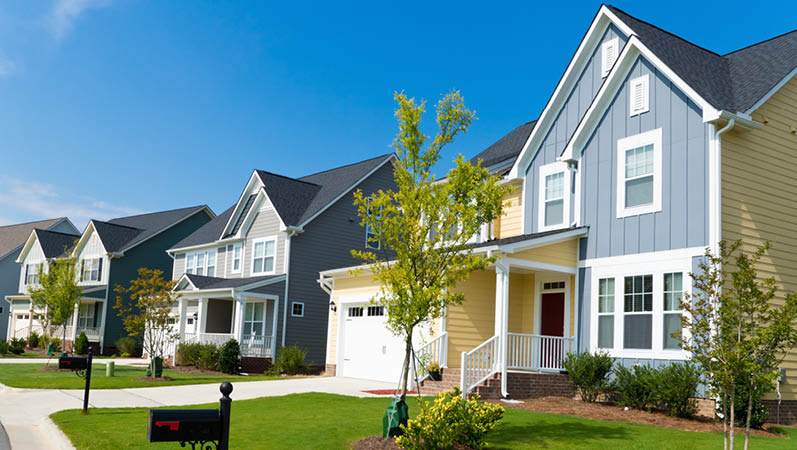Reverse Mortgages Make Denver Housing Inventory Even Tighter
A surprising factor behind the country’s tight home inventory may be the increasing popularity of reverse mortgages.
At the national level, housing supply plummeted over the last quarter of 2017 from 4.2 months to 3.2 months of supply, then rose slightly to 3.4 months’ supply to start 2018, according to the National Association of Realtors. Months of supply is the measure of how many months it takes for the current inventory of homes on the market to sell, considering the current pace of home sales. For example, if there are 30 homes on the market and 10 homes selling each month, there is a 3 month supply of homes for sale. At the end of February, there were 1.59 million existing homes for sale nationwide, an 8.1 percent decrease over the same time last year. Housing inventory has fallen year-over-year for 33 consecutive months.
What could reverse mortgages have to do with this? Reverse mortgages mean that homeowners 62 and older who might otherwise have to sell their residence to unlock their home equity — something they might do if they don’t have enough cash flow to retire — can stay in their homes instead. That means fewer homes on the market.
With a reverse mortgage, the lender provides payments to the homeowner instead of the homeowner making payments to the lender. The payments can come in the form of a lump sum, a series of monthly payments, a line of credit, or some combination of these. The loan gets repaid from the proceeds of selling the home when the homeowner moves out or passes away.
Hardly Any Homes for Sale in Denver
Denver, like the country as a whole, has tight home inventory — much tighter, in fact. Denver had just 1.16 months of inventory for single-family homes in March, and just 1.51 in February, according to the Denver Metro Association of Realtors’ April 2018 Market Trends Report. High demand coupled with the slow pace of new construction are contributing factors to Denver’s tight inventory.
Denver’s active inventory in March consisted of 4,619 houses and condos, an increase of 13.10 percent over February — not surprising since March means warmer weather and the beginning of the spring selling season — but a decrease of 6.14 percent over March 2017. When the DMAR looked at the numbers going back to 1985, they found that the average active listings for March was 15,040 — more than three times as many as were available last month. In December, inventory was just 3,854 homes, according to the DMAR. That’s a record low since 1985, and 28.1 percent of the historical average.
“Denver happens to be the number two city in the country for reverse mortgages.”
Reverse Mortgages in Denver
Denver happens to be the number two city in the country for reverse mortgages, according to an analysis by Lending Tree. This is probably in part because of Denver’s high home values, which mean homeowners can receive quite a bit of money through a reverse mortgage. The average proceeds a new borrower is eligible to receive in Denver is $200,765 whereas the national average among the 100 largest US cities is $140,000. The city’s median home value is $418,100.
The number of reverse mortgages originated per 1,000 homeowners age 60 or older in Denver was 13.48 compared with 7.1 nationally. Only Virginia Beach had a higher rate, at 13.8. Riverside, California, came in third at 13.37.
The lack of inventory might also be causing more seniors to stay in their homes since they have few options for moving if they want to downsize to free up cash. Or seniors might just want to stay put no matter what. According to an AARP Public Policy Institute study published in 2014, 87 percent of individuals age 65 and older want to remain in their current home as they age. (Related: Multigenerational Homes: Is One in Your Future?)
Factors Behind the High Reverse Mortgage Volume
In January, the volume of reverse mortgages that closed reached a high not seen since March 2011. While the surge was probably partly due to homeowners trying to beat out recent changes in reverse mortgage rules that reduced how much they could borrow, the 48 lenders who entered the reverse mortgage market in January seem to think the trend of high reverse mortgage volume will continue.
In federal fiscal year 2017, more than 55,000 reverse mortgages were approved, an increase of more than 6,000 over the nearly 49,000 approved in 2016. In 2015, numbers were even higher, at 58,000. While reverse mortgage volume is less than half of what it was at its peak in 2009 (114,692), the increasing numbers of retiring baby boomers could contribute to continued demand for reverse home loans in the coming years.
If you need help navigating Denver’s tight housing market, whether you’re buying or selling or even renting an apartment, one of our Usaj Realty brokers would be excited to help you.
